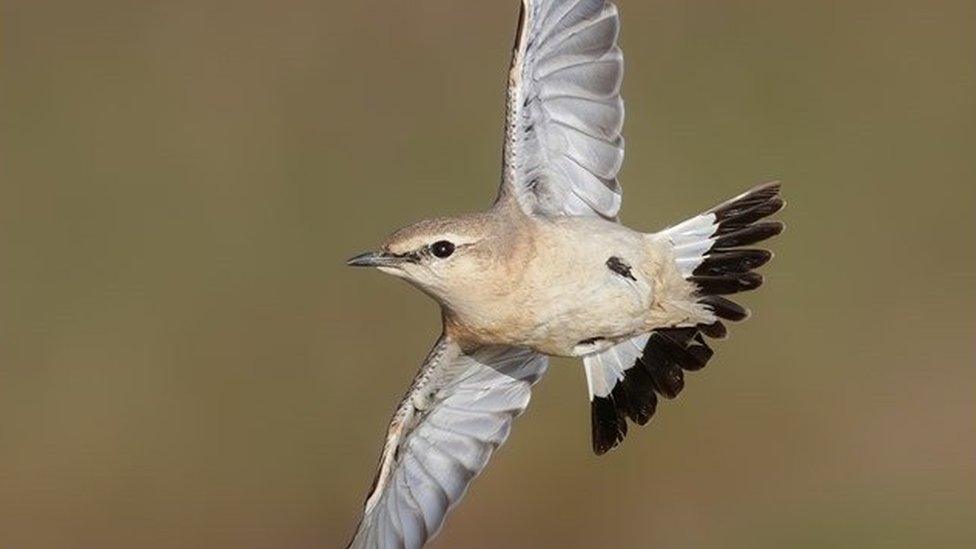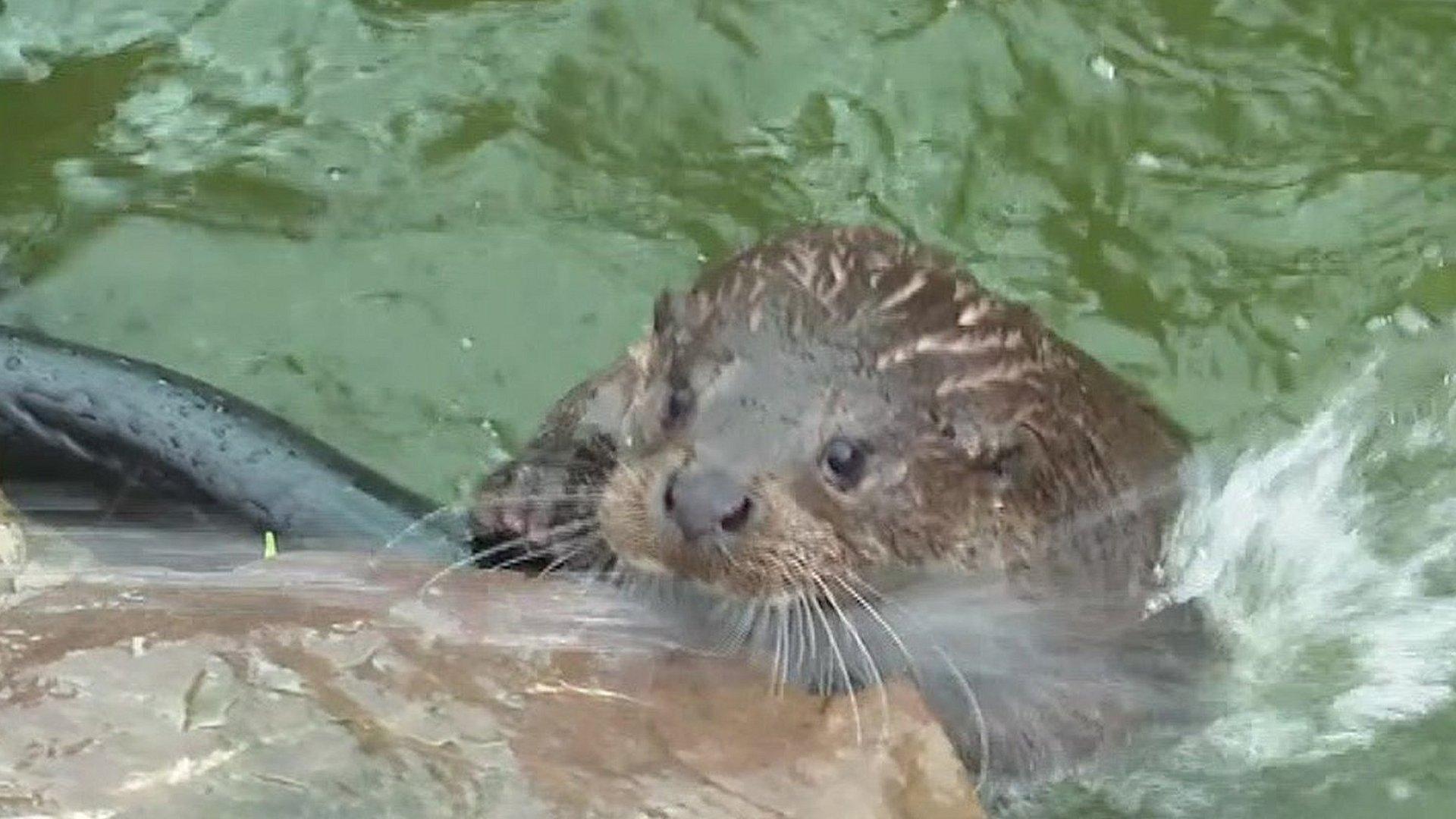Rare Gobi Desert bird visits Devon and Cornwall
- Published

Bird watchers were asked to move their cars after a rush to catch a glimpse of the rare bird
A rare species of bird usually found in arid deserts and mountainous regions "caused a stir" when it was spotted in east Devon and north Cornwall.
The isabelline wheatear was sighted on Seaton Wetlands for the second time in recorded history.
It is native to "mountainous slopes between Turkey and the Gobi Desert".
East Devon District Council said birdwatchers flocked to the reserve, sparking an appeal for people to move their cars after areas were blocked.
It is thought to have flown to Cornwall, where Nick Moran from the British Trust for Ornithology (BTO) said there been sightings in Holywell, from 23-25 January.
He said there had been just 55 records of the bird in the UK since 1887.

The isabelline wheatear is usually found in mountainous regions
He added: "After the sighting in 1887 it was 90 years until the next one.
"That gives some sense of how rare it is, there are one or two recordings a year across the whole of Britain and the majority are in October."
He said the bird had made a "dramatically wrong turn" to end up on Colyford Common, which was its home between December and 14 January.
The bird's extended stay makes it the "first ever" isabeline to "overwinter" in Britain, the BTO confirmed.
'Something of a stir'
Councillor Geoff Jung, from East Devon District Council, said the bird was seen "darting from posts to the boardwalk" and "feeding well" despite the cold and wet weather.
He said despite "causing something of a stir" the thrush-sized bird was "seemingly oblivious" to watchers and photographers who flocked to the nature reserve.
The council said the rare sighting drew crowds that quickly filled reserve parking, leading to cars blocking the entrance to Colyford Common.
The council said it had to direct people to park elsewhere with signage and on social media, but its facilities "stood up well to the pressure".
On sightings of an isabelline wheatear in Cornwall, Mr Moran added: "It's not definitely the same bird but my assumption is that it probably is as they are extremely rare in the UK and even more so in winter."
The isabelline wheatear is closely related to the northern wheatears which can be seen on Seaton Wetlands every spring and autumn.
Kevin Rylands, Devon birds county recorder for the RSPB, said the species breeds from Turkey eastwards, but usually "winters" in India and East Africa, making a Devon sighting in December "doubly unlikely".
He said the sightings were "the second ever in Devon" and "only the third [on] Cornish record".

Follow BBC News South West on Twitter, external, Facebook, external and Instagram, external. Send your story ideas to spotlight@bbc.co.uk, external.
Related topics
- Published16 January 2023
